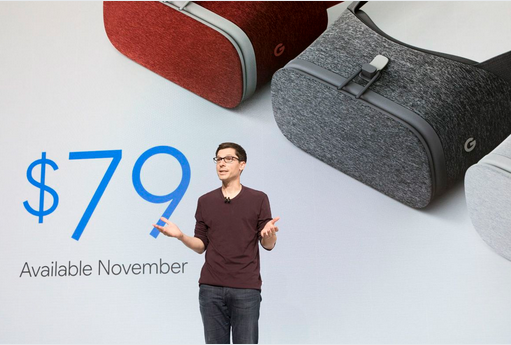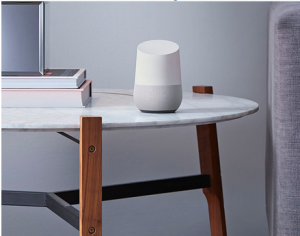Google Pixel phones, Daydream View and Chromecast Ultra: Everything Google just announced. After all the leaks there were few surprises, but the theme was Google Assistant Everywhere.
From the outsource:
It feels like forever since the first rumors about Google’s announcements for October 4 event started cropping up, but now we can finally lay at least some of them to rest.

The event opened with a cute video by the characters of HBO’s “Silicon Valley.” “Why wasn’t I on the beta?!” That was followed by a summary by Sundar Pichai of computing since the first PC. “We’re moving from a mobile first to an AI first” world.” That means Google Assistant, announced at the Google I/O conference in May, with its voice queries, contextually relevant information and so on — much like the most current version of Apple’s Siri.
Going further requires getting it in the hands of users to see how they really interact, which it began with the release of Google Allo.
Now Google Assistant comes to your phone and home. Rick Osterloh of the company’s new Hardware group took the stage to explain how Google is well situated to meld hardware and software. A new family of home grown devices is the result.
First up, the phone: it’s dubbed Pixel, which comes as a surprise to no one. There’s a new material design with rounded icons and Google Assistant right on the home screen (where you probably can’t get rid of it). In addition to being shiny, the phone includes:

- Google Assistant
- The camera, which it claims is the best ever. As you might expect from Google, its camera incorporates a lot more computational photography than most, such as a burst-shooting best-shot chooser (Smart Burst); HDR+, which works in any light and uses multiple short exposures for better exposures and has “zero” shutter lag and fast processing; and better-than-average digital stabilization.
- Unlimited Google Photos storage.
- Google Duo, the company’s video calling app announced at Google I/O.
- Up to 7 hours of battery life on 15 minutes of charging.
- Android 7, Nougat. It automatically downloads and installs updates in the background. (I hope you can turn that off.) It has built in Google support chatting. Plus easy migration from iPhone!
- A new line of cases with photos.
It comes in two sizes, 5 inches and 5.5 inches. They have the same hardware specs. They start at $649, AU$1,079 or £599, and are available for preorder in the US, Australia and the UK. (Read out here more about Google launches its first phone, pivots to artificial intelligence)
Then Google moved on to virtual reality, with its new Daydream View headset.
 The platform was announced at Google I/O in May, a programming interface combining software, phone hardware and headsets. Today the company rolled out the first Daydream-compatible VR headset, the Daydream View, and a reasonably priced one at that: $79, £69 or AU$119 converted.
The platform was announced at Google I/O in May, a programming interface combining software, phone hardware and headsets. Today the company rolled out the first Daydream-compatible VR headset, the Daydream View, and a reasonably priced one at that: $79, £69 or AU$119 converted.

Highlights:
- It uses a fabric cover for looks and comfort, it’s 30 percent lighter than most headsets, comes in slate, snow and crimson colors and can fit over eyeglasses.
- Your phone drops in, auto aligns and auto connects.
- The controller has built in gyros sensitive enough for drawing, and it fits into the phone slot when not in use so you don’t lose it.
- New Daydream apps include a “Fantastic Beasts and Where to Find Them” tie-in wand game; Star Chart, an educational astronomy app; a first-person space shooter game; movies in VR from the major streaming sites; and more.
- Google Play Movies, Google Photos, Street View, Maps and YouTube will have immersive Daydream support.
Homeward bound. We weren’t terribly thrilled by Google’s OnHub router, which debuted about a year ago, but it’s now turned into Google Wifi. It’s modular, can work as a mesh in your home with multiple access points, and has built-in smarts to optimize the signal strength as you roam through your house. You can turn it off remotely, as well. Preorders start in November, but in the US only. It ships in December and will cost $130 for a single, or $300 for a three-pack.
Playing catch-up with others in the crowded video streamer space, Google added 4K UHD support with HDR and Dolby Vision to its new higher-end Chromecast Ultra, for a not-terribly-onerous $69, £69 or AU$99. It’s available in the US, UK and Australia. Google Play Videos will have content for it, it’s faster than before with better Wi-Fi support and it now has an Ethernet port.
First revealed in May 2016 at Google I/O, the company’s developer conference, this virtual-assistant competitor for Amazon Echo finally arrives. Google Home incorporates all the features of Google Assistant, plus smart home controls. The microphones are optimized for better voice recognition, there’s a way to turn the mic off, you can swap bases and Google says the speakers are great.

Google Assistant features include intelligent voice-activated music-streaming playback, get answers to lots of questions, get traffic info and translations, summarizes information you need for your day (such as tasks and weather) and more.
Partnerships with IFTTT, Samsung, Philips and Nest will allow Google Home to control home electronics. It can play and control media on TVs and home audio systems using Google Cast (Netflix will support voice control), and it’s smarter about using multiple Home devices.
Google Home will cost $130 — with a free six-month trial of YouTube Red, the video site’s ad-free service. You can preorder now and it will ship on November 4. It’s US-only for now.
A new Actions programming interface for Google Assistant will let third-party software developers access it to perform conversation-based app-specific operations and direct “do it” actions. There’s a new embedded Google Assistant SDK for next year, so developers can embed the capabilities in their apps.
And that’s all, folks!


